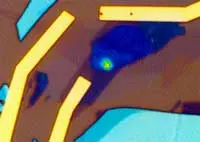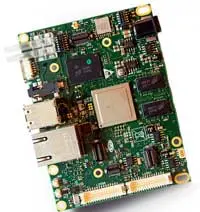Electronics News
Archive : 26 September 2016 год
 Researchers from the Graphene Flagship have used layered materials to create all electrical quantum LEDs which can emit single photons. The devices are said to have the potential to act as on chip photon sources in quantum information applications.
Researchers from the Graphene Flagship have used layered materials to create all electrical quantum LEDs which can emit single photons. The devices are said to have the potential to act as on chip photon sources in quantum information applications.
The LEDs are constructed of thin layers of different materials, stacked to form a heterostructure. Electrical current is injected into the device, tunnelling from single layer graphene, through a tunnel barrier of a few layers of boron nitride and into a mono- or bilayer of a transition metal dichalcogenide (TMD), such as tungsten diselenide (WSe2). In this layer, electrons recombine with holes to emit single photons.
Previously, single photon generation was said to rely on optical excitation, large scale optical set ups with lasers and precise alignment of optical components.
Professor Mete Atatüre, from the Cavendish Laboratory at the University of Cambridge, said: “In a scalable circuit, we need fully integrated devices that we can control by electrical impulses, instead of a laser that focuses on different segments of an integrated circuit. For quantum communication with single photons, and quantum networks between different nodes – for example, to couple qubits – we want to be able to just drive current and get light out. There are many emitters that are optically excitable, but only a handful are driven electrically.”
The team added that, in its devices, a current of less than 1µA ensured that single photon behaviour dominated the emission characteristics.
Prof Andrea Ferrari, chair of the Graphene Flagship Management Panel and its science and technology officer, added: “We are just scratching the surface of the many possible applications of devices prepared by combining graphene with other insulating, semiconducting, superconducting or metallic layered materials. In this case, not only have we demonstrated controllable photon sources, but we have also shown that the field of quantum technologies can greatly benefit from layered materials.
“We hope this will bring synergies between the Graphene Flagship and its researchers, and the recently announced Quantum Technologies Flagship, due to start in the next few years. Many more exciting results and applications will surely follow.”
The LEDs are constructed of thin layers of different materials, stacked to form a heterostructure. Electrical current is injected into the device, tunnelling from single layer graphene, through a tunnel barrier of a few layers of boron nitride and into a mono- or bilayer of a transition metal dichalcogenide (TMD), such as tungsten diselenide (WSe2). In this layer, electrons recombine with holes to emit single photons.
Previously, single photon generation was said to rely on optical excitation, large scale optical set ups with lasers and precise alignment of optical components.
Professor Mete Atatüre, from the Cavendish Laboratory at the University of Cambridge, said: “In a scalable circuit, we need fully integrated devices that we can control by electrical impulses, instead of a laser that focuses on different segments of an integrated circuit. For quantum communication with single photons, and quantum networks between different nodes – for example, to couple qubits – we want to be able to just drive current and get light out. There are many emitters that are optically excitable, but only a handful are driven electrically.”
The team added that, in its devices, a current of less than 1µA ensured that single photon behaviour dominated the emission characteristics.
Prof Andrea Ferrari, chair of the Graphene Flagship Management Panel and its science and technology officer, added: “We are just scratching the surface of the many possible applications of devices prepared by combining graphene with other insulating, semiconducting, superconducting or metallic layered materials. In this case, not only have we demonstrated controllable photon sources, but we have also shown that the field of quantum technologies can greatly benefit from layered materials.
“We hope this will bring synergies between the Graphene Flagship and its researchers, and the recently announced Quantum Technologies Flagship, due to start in the next few years. Many more exciting results and applications will surely follow.”
Author
Graham Pitcher
Source: www.newelectronics.co.uk
 Arrow Electronics has confirmed a new distribution agreement with Novasom Industries, a global engineering company that develops advanced technology solutions for products and processes in the fields of embedded electronics. The agreement will cover the entire EMEA region.
Arrow Electronics has confirmed a new distribution agreement with Novasom Industries, a global engineering company that develops advanced technology solutions for products and processes in the fields of embedded electronics. The agreement will cover the entire EMEA region.
The agreement includes the NOVAsom family of single board computers based upon an ARM Cortex core. The boards are said to combine high performance with low power consumption and feature an innovative engineering concept.
Developed by Novasom as a powerful general purpose line, the boards can be integrated and customised into a range of applications with demanding graphics requirements, from low power IoT to digital signage.
Arrow customers will also have access to the NOVAsom development kit and the technical support.
Author
Peggy Lee
Source: www.newelectronics.co.uk

